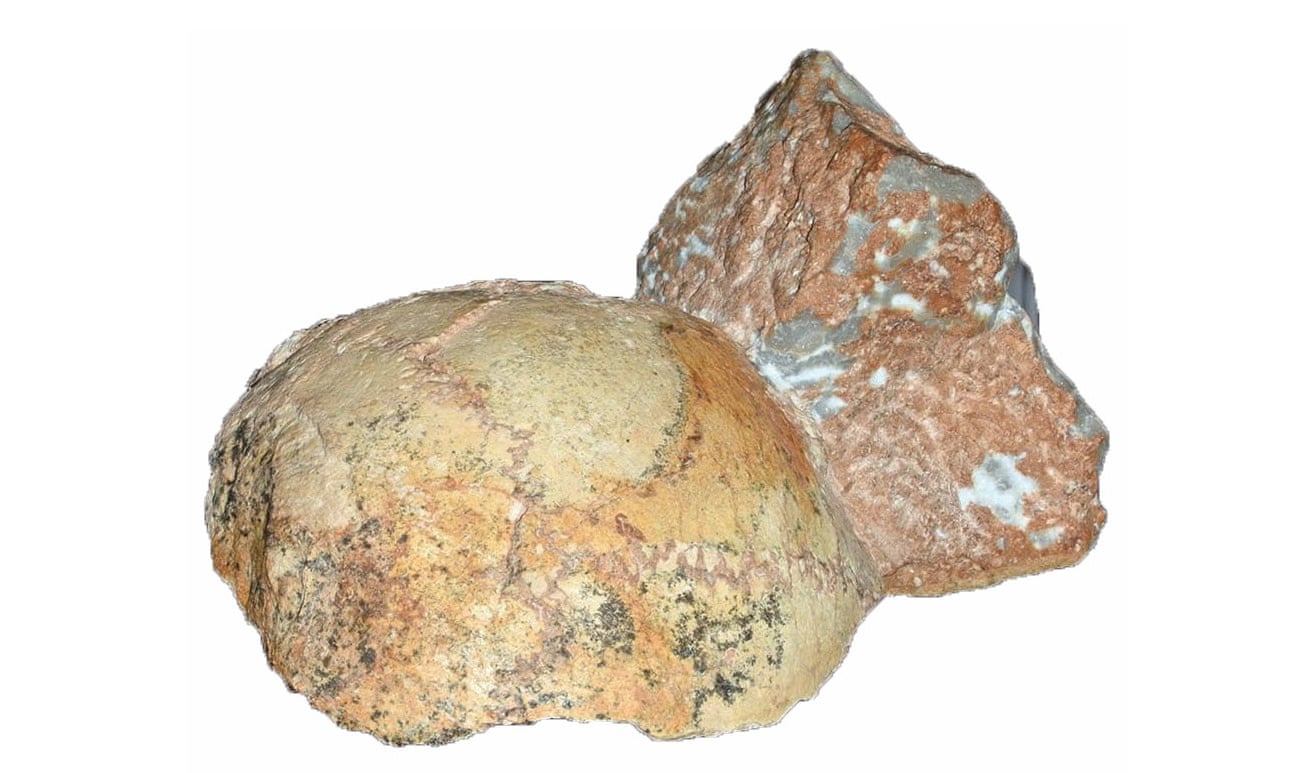A skull found in Greece and dating to at least 210.000 years ago, represents the oldest specimen of anatomically modern man in Eurasia, ie outside Africa, as announced by a group of Greek and foreign scientists. This means that - if scientists are right - the skull is at least 150.000 years older than the oldest "human embryo" fossil (Homo sapiens) ever found in Europe.

A second skull found at the same site in the Peloponnese and estimated to be at least 170.000 years old has Neanderthal features. The two fossilized skulls were discovered in the Apidima cave west of the Aeropolis in Mani in the late 1970s, during research by the Anthropological Museum of the Medical School of the University of Athens.
But until now they had not been studied in depth and had remained relatively unknown, despite their great importance, as is now perceived with great delay.
Researchers from Germany, Greece and Britain, led by the distinguished Greek paleoanthropologist Katerina Harvatis of the Schenkenberg Center for Human Evolution and the Ancient Environment of the German University of Eberhard Karls in the Tiben for the first time comparing, with modern methods of imaging and dating, the two skulls, known as "Leap 1" and "Leap 2".
As Mrs. Harvati stated in APE-MPE, "the results of our research show the importance of the Greek space for human evolution. We have the oldest modern man outside Africa, transporting the arrival of Homo sapiens to Europe more than 150 thousand years earlier than previously thought. This work is the result of 25 years of my research in Africa, in Europe and especially in Greece. As a Greek woman, I hope that research in Greece will continue, as I believe that our country still has a lot to offer in the field of paleoanthropology ".
The research team, which performed, among other things, a virtual reconstruction of the damaged parts of the skulls, made comparisons with other human fossils and used a high-precision radiometric dating method to determine the age of the two skulls.
"Leap 2", which is in better condition, shows the Neanderthal features, while "Leap 1" has no Neanderthal features at all, but combines modern and primitive features, which -according to scientists- classify it in the family of Homo sapiens .
The researchers estimate that two groups lived in the Apidima cave, an early population of Homo sapiens, which was later replaced by a Neanderthal population, which pre-existed in the wider region of southern Greece.
In turn, the Neanderthals were replaced by ancestors of modern man of the Upper Paleolithic period, whose earliest presence in the area dates back to about 40.000 years ago.
Many "exits" and the importance of Greece
The discovery of the antiquity of the "Leap 1" skull and the estimate that it belongs to Homo sapiens, reinforces the view that the ancestors of modern humans spread from Africa to Europe and Asia earlier than is commonly believed.
Southeastern Europe in general and the region of today's Greece in particular was an important corridor for the spread of these first "immigrants" from Africa. The new study, according to the researchers, also supports the theory that there was not just one "exit" from the black continent, but many.
"Leap 2 is about 170.000 years old. We would say that he was a Neanderthal ", according to Katerina Harvati. "To our great surprise, Leap 1 is even older, about 210.000 years old, but has no Neanderthal features." Instead, the study revealed a mixture of modern human and archaic features, alluding to an early Homo sapiens.
"Our findings suggest that at least two groups of people lived in the area of Southern Greece during the Middle Pleistocene: an early population of Homo sapiens and, later, a group of Neanderthals," Ms. Harvati explained. This supports the hypothesis that early modern humans made many trips beyond Africa, where they first appeared.
"The Skull Leap 1," he said, "shows that a first dispersal occurred earlier than we thought, and that it spread much more geographically, even within Europe. We speculate that, as in the Near East, the early modern human population, represented by Leap 1, was probably replaced by Neanderthals, whose presence in southern Greece is well documented, taking into account Leap skull 2 from ", He added.
However, Neanderthals in turn were replaced by modern humans. During the Upper Paleolithic period, about 40.000 years ago, newly arrived modern humans settled in the area, as in the rest of Europe. Their presence is confirmed by the excavation of elaborate stone tools and other finds. Neanderthals, on the other hand, disappeared around the same time.
"This discovery underscores the importance of Southeastern Europe in human evolution," Harvati said.
Source: RES-EAP
